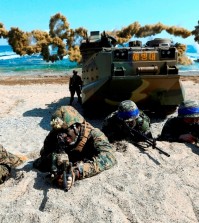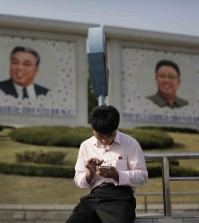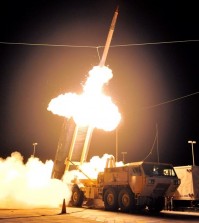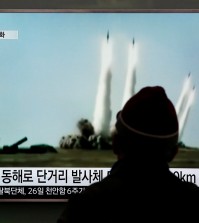- California Assembly OKs highest minimum wage in nation
- S. Korea unveils first graphic cigarette warnings
- US joins with South Korea, Japan in bid to deter North Korea
- LPGA golfer Chun In-gee finally back in action
- S. Korea won’t be top seed in final World Cup qualification round
- US men’s soccer misses 2nd straight Olympics
- US back on track in qualifying with 4-0 win over Guatemala
- High-intensity workout injuries spawn cottage industry
- CDC expands range of Zika mosquitoes into parts of Northeast
- Who knew? ‘The Walking Dead’ is helping families connect
Kerry hints at possible THAAD deployment on Korean soil to deter N. Korea
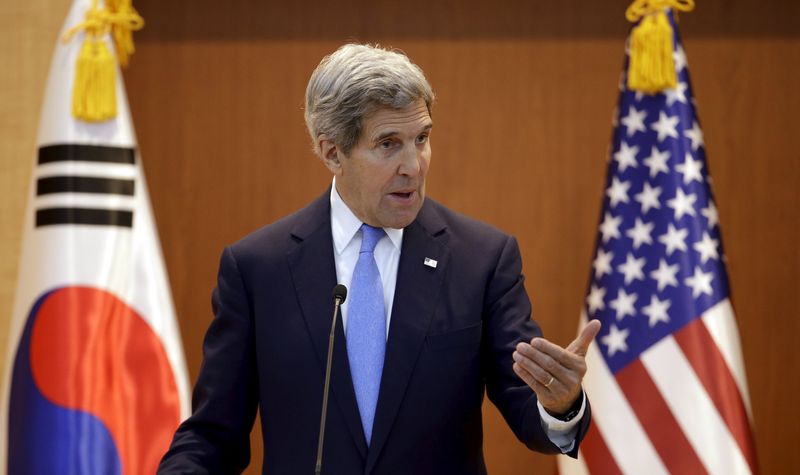
U.S. Secretary of State John Kerry answers a reporter’s question during a joint news conference following meetings with South Korean Foreign Minister Yun Byung-se at the Foreign Ministry in Seoul, South Korea, Monday, May 18, 2015. (AP Photo/Lee Jin-man, Pool)
SEOUL, May 18 (Yonhap) — U.S. Secretary of State John Kerry vowed on Monday full preparedness with every possible means, including the controversial advanced missile defense system, to better deter and counter evolving threats.
“Particularly in this part of the world, Kim Jong-un engaged in these extraordinarily provocative activities, building nuclear weapons against all the U.N. conventions,” Kerry said in a meeting with U.S. service personnel and officials at its diplomatic establishment here in Seoul.
As Pyongyang is trying to send diplomatic efforts by members of the six-party denuclearization talks involving South Korea, the U.S., China, Japan and Russia nowhere, “nobody quite knows what America’s first line of defense in Seoul will do” which called on the U.S. as well as the international community “to be prepared for every eventual outcome.”
“This is why we need to deploy ships, forces … and we are talking about THAAD,” he said, citing the Terminal High Altitude Area Defense (THAAD) system, without further elaboration.
Washington has expressed its willingness to deploy the battery here to better protect South Korea and some 28,000 U.S. troops from North Korea’s threats, though the allies have said no official consultations or decisions have taken place on the matter.
As an integral part of the U.S.-led missile defense system, THAAD is designed to shoot down short, medium and intermediate ballistic missiles at a higher altitude in their terminal phase using a hit-to-kill method.
“But in the end, we raise the currency … and the capacity, where the world knows what we bring to the table,” Kerry said, expressing gratitude for the service of the men and women in uniform.
Some 28,000 U.S. troops currently stationed here are a legacy of the 1950-53 Korean War, which ended in a ceasefire, leaving the two Koreas divided and technically still at war.
Kerry’s visit here, the first in 15 months, came amid evolving missile and nuclear threats by the bellicose regime. Pyongyang recently announced the successful test-launch of a submarine-launched ballistic missile (SLBM), which would provide the country with an advanced way of delivering a nuclear warhead.
The meeting with the U.S. service members was his last scheduled stop on his two-day trip here on the second leg of his Asian tour after Beijing. While staying in Seoul, he met with President Park Geun-hye and Foreign Minister Yun Byung-se to reaffirm a strong alliance to better deal with the communist North.








